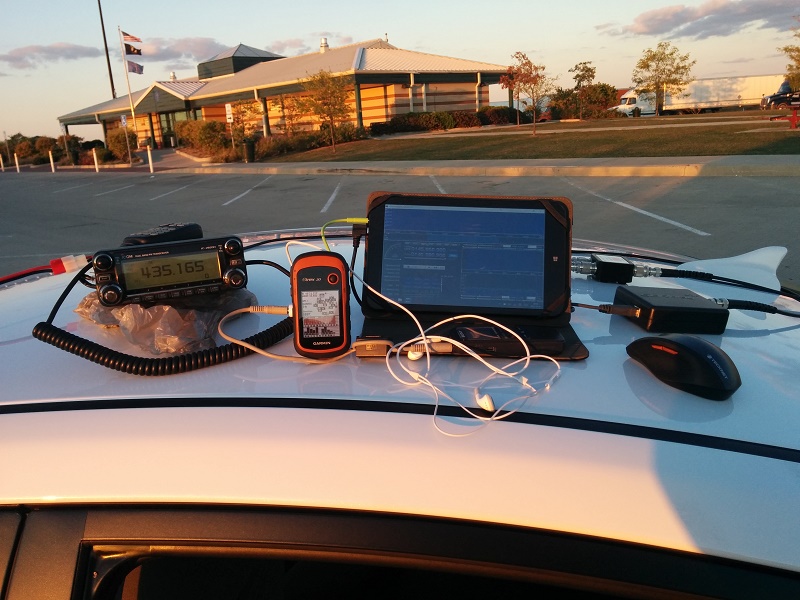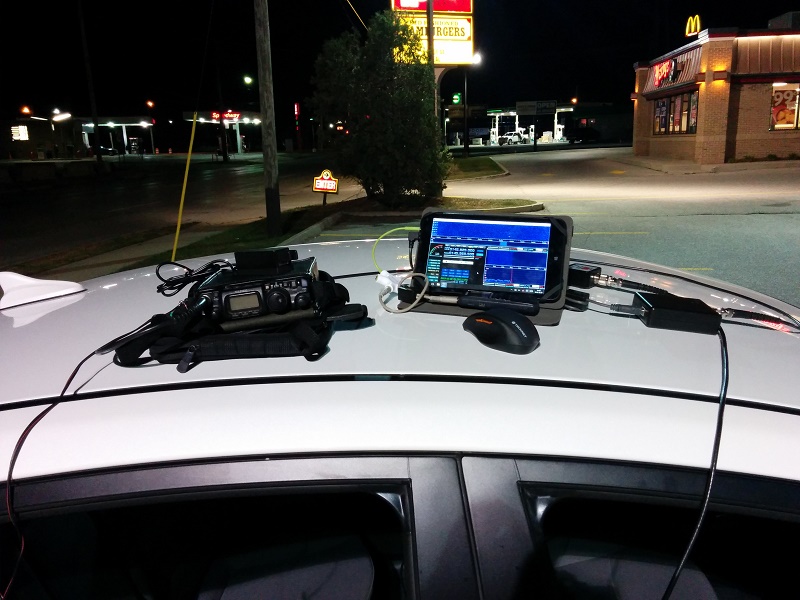EA4SG wrote:
I would like to use SDRPlay for satellite operation.
<snip>
Depending on the satellite the IC910H will be transmitting in VHF and SDRPlay receiving on UHF and viceversa.
There is a big "frequency gap" between VHF and UHF and SDRPlay will never been receiving on the same band as the radio will transmit, but as the antennas are close one to each the other... Is there any risk for SDRPlay to be damaged?
I have been using an SDRplay for working amateur satellites over the past few months. It is a great receiver for that purpose. I normally use two radios for my operating, something to transmit and the SDRplay as my receiver, connected through a diplexer to an Elk Antennas handheld 2m/70cm log periodic antenna. The diplexer is necessary, as the log periodic has a single coax feedpoint, and I have two radios. The diplexer also acts as a filter with at least 60dB isolation between the two band ports, in addition to the front-end filtering in the SDRplay.
To answer your question, I have operated at up to 50W transmit power on one band (either 2m or 70cm), and have no problems receiving on the opposite band with my SDRplay. Normally I use 5W for SSB operating with an FT-817ND as my transmitter, but for FM I often use a 2m/70cm FM mobile like an Icom IC-2820H or IC-2730A, which has 3 transmit power levels (5/15/50W). The front-end filtering in the SDRplay (also present in the FUNcube Dongle Pro+) is a big advantage over the inexpensive "RTL-SDR" dongles we can buy from many places.
Here are a couple of photos of how I have used my SDRplay for working satellites from portable stations. First, using it with an 8-inch Windows 10 tablet and an Icom IC-2820H 2m/70cm FM mobile radio as my transmitter. This was for working the AO-85 satellite in mid-October, while I was on a trip. I stopped at a freeway/motorway rest area north of Indianapolis, in Indiana, when I used this setup:

- IC-2820H, 8-inch Windows 10 tablet with HDSDR, and SDRplay for working AO-85 from a motorway rest area north of Indianapolis, Indiana (USA) on 15 October 2015
- IMG_20151014_185314.jpg (167.97 KiB) Viewed 25203 times
A few days later on the same trip, I was near the Canada/USA border in Michigan, northeast of Detroit at Port Huron (across from Sarnia in Ontario), when I used an FT-817ND as my transmit radio with the SDRplay to work AO-73:

- FT-817ND, 8-inch Windows 10 tablet with HDSDR, and SDRplay for working AO-73 from Port Huron, Michigan (USA) on 20 October 2015
- IMG_20151019_213806.jpg (151.54 KiB) Viewed 25203 times
In both instances, I connected the radio I used and my SDRplay to a diplexer which is sitting behind the tablet in each photo, and then to my Elk log periodic which is not visible in either photo.
I like using the SDRplay to work AO-85, since I can write an RF recording and then play it back into AMSAT's FoxTelem software to upload telemetry from the satellite to AMSAT's server. For AO-73 and other satellites like AO-7 and FO-29 with linear transponders for SSB/CW operation, I can capture the entire transponder in the RF recording written by HDSDR. If I used a more powerful computer, I could use a virtual audio cable from HDSDR and feed the received signals in real time to FoxTelem or the FUNcube Dashboard for AO-73, and upload telemetry in real time to those servers (provided I have Internet access from wherever I am operating).
I think you will be happy with the SDRplay for satellite work. I tried SDR# when I bought my SDRplay last summer, but did not like its user interface. HDSDR has a lot of options, but it seems to be easier to run on my inexpensive Windows tablets. I have used SDR-Console on a larger laptop, but don't use that on the tablets due to its appetite for memory and CPU that the tablets lack. Otherwise, SDR-Console is a good program like HDSDR.
If you want to see more of what I have been doing with my SDRplay, you can visit my public Dropbox space at
http://dropbox.wd9ewk.net/ and browse through the folders with dates and satellite names on them. I have placed RF recordings I made of those passes (large WAV files), audio recordings (MP3s), and photos of my setups and of my AmsatDroid Free tracking app showing the passes I worked. I also wrote an article about using SDR and the inexpensive Windows tablets (at the time, Windows 8.1, but it can also apply to the newer Windows 10 tablets) for satellite operating. It was not specific to the SDRplay, but it is in the Articles folder in my Dropbox space (originally written for the AMSAT Journal last year, then reprinted in AMSAT-UK's OSCAR News a few months later).
Buena suerte, & 73!!

